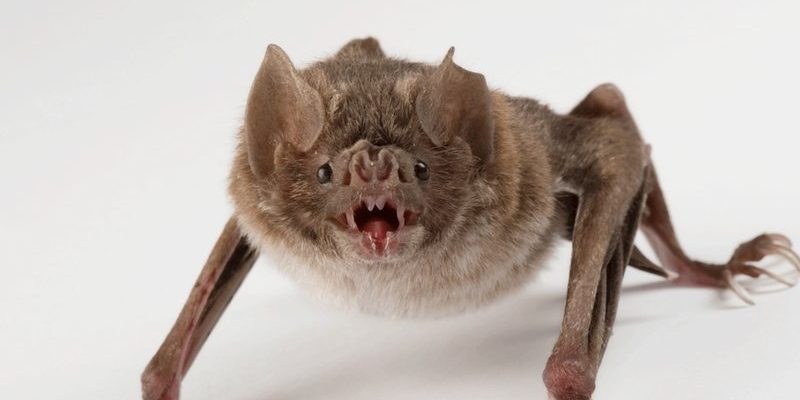
Vampire bats are unique creatures found primarily in Central and South America. Unlike the mythical vampires of folklore, they rely on blood as a food source—specifically, the blood of other animals. This might sound unsettling, but when you dig into their behavior and biology, things get a bit clearer. Let’s explore just how dangerous vampire bats can actually be to humans and whether you should be worried about running into one during your next jungle adventure.
Understanding Vampire Bats
Vampire bats belong to three species, with the common vampire bat (Desmodus rotundus) being the most well-known. These bats are about the size of a human fist and have sharp fangs that help them make tiny incisions in their victims. You might think of them as nature’s little bloodsuckers, but they don’t attack humans as a primary food source. Instead, they typically feed on livestock like cows or horses, which makes them a concern primarily for farmers.
These bats have a special diet, consuming blood from their hosts. The way they do this is fascinating. They use their heat sensors to locate blood vessels and then make a small cut in the skin with their fangs. Their saliva contains anticoagulants to prevent the blood from clotting while they feast. While all this may sound creepy, it’s important to note that they only take a small amount of blood. Think of it like a tiny snack instead of a full meal!
Vampire Bats and Human Safety
Now that we have a basic understanding of vampire bats, let’s delve into the question at hand: Are they dangerous to humans? Honestly, the answer is a bit nuanced. While vampire bats don’t usually target humans, there are situations where they can bite people, especially if they’re feeling threatened or in an area where they’re used to humans being around.
In rural regions where vampire bats are common, the risk is greater. If a bat feels cornered or threatened, it might bite, and this is where the danger lies. It’s not just the bite that poses a risk; these bats can transmit diseases, such as rabies. Rabies is a serious viral infection that affects the brain and can be quite lethal if not treated quickly. This is why, if you happen to find yourself in an area where vampire bats roam, it’s crucial to be aware of your surroundings.
Signs of a Vampire Bat Bite
If you are bitten by a vampire bat, you might notice some specific signs. The most common indicator is a small puncture wound, often accompanied by a little bleeding. You might see:
- A tiny hole in the skin, similar to a pinprick
- Swelling or redness around the bite
- Pain in the area, although this can be mild
- In some cases, flu-like symptoms if rabies develops
If you ever suspect a vampire bat has taken a bite, it’s crucial to seek medical attention right away. Doctors can provide post-exposure rabies shots, which are effective if administered promptly. It’s always better to be safe than sorry!
Preventing Encounters with Vampire Bats
If you’re traveling in regions where vampire bats are found, you might want to take some precautions. Here are a few tips to minimize your risk:
- Avoid sleeping outdoors: This is especially important in rural areas where bats are more common. If you’re camping, set up your tent far away from any known bat roosts.
- Use insect repellent: Applying a good repellent can keep bats—and other biting insects—away.
- Wear protective clothing: Long sleeves and pants can help protect your skin from unexpected bites.
- Be cautious with livestock: If you’re in an area known for vampire bats, keep livestock away from places where bats roost.
By being mindful about where you sleep and what you wear, you can significantly reduce your chances of an encounter.
The Ecological Role of Vampire Bats
While it’s easy to focus on the dangers, it’s worth noting that vampire bats play an important role in their ecosystem. They help control animal populations and their feeding behavior can even promote biodiversity. Their droppings, rich in nutrients, act as fertilizer for the plants in their habitat, contributing to their environment’s overall health.
Additionally, research into vampire bats has led to advances in medicine. Scientists have studied their saliva to develop anticoagulant drugs that help prevent blood clots in humans. So, while these bats can pose risks, they also provide benefits that highlight the complexity of nature.
So, can the vampire bat be dangerous to humans? The answer is yes, but the risk is relatively low for most people. Vampire bats don’t typically seek out humans as prey, but if you happen to be in the wrong place at the wrong time, a bite can happen. If you’re aware and take precautions, you can minimize your chances of an encounter.
It might be more useful to think of vampire bats as fascinating creatures rather than just dangerous pests. They play a significant part in their ecosystems and have even contributed to some advancements in human medicine. Next time you hear about them, remember that a little knowledge goes a long way in understanding these unique animals. Stay safe, and maybe even consider the incredible role nature plays—even with its creepiest characters!

